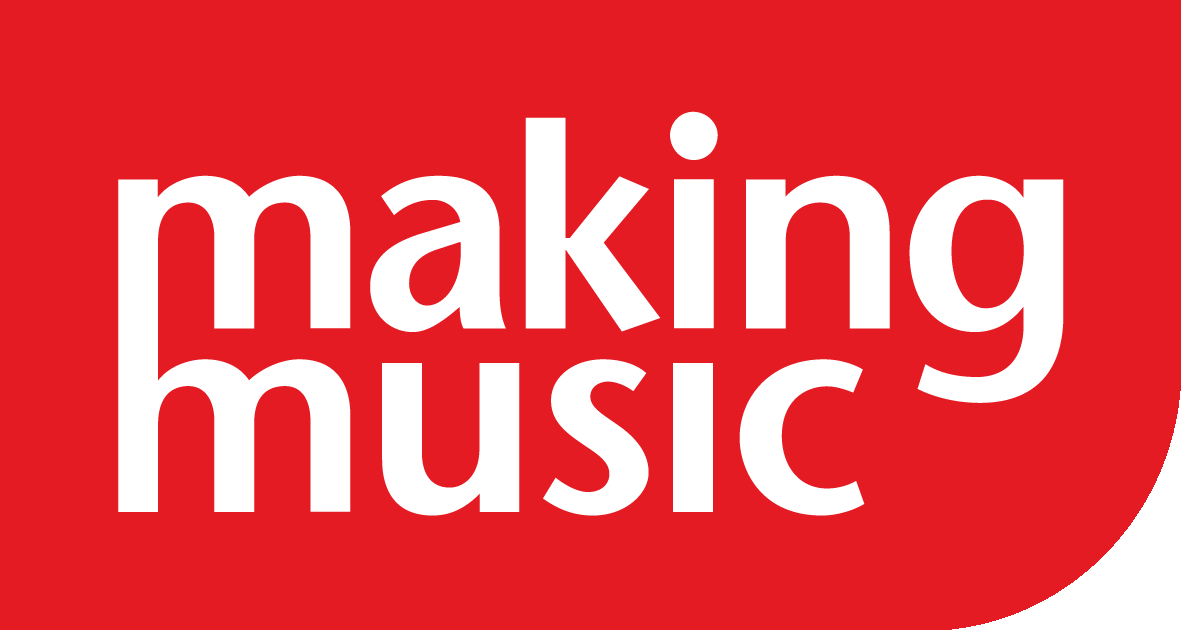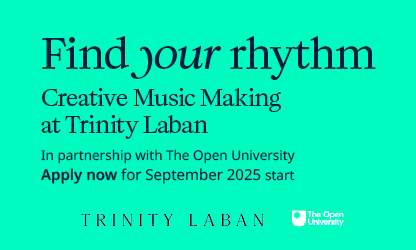Defining your music group: how to articulate your purpose to create cohesion and promote inclusion
Across the country, there are thousands of leisure-time music groups that exist for distinct reasons and appeal to different people. This is a great thing, but it means that you need to able to clearly describe who your group is and what it does so that people know what to expect when they interact with you. This resource will cover how and why to produce a ‘definition statement’ for your music group.
Why is it important to define your music group?
A good definition statement that articulates your group’s identity and purpose will help with several things. It will help people understand who you are immediately when they encounter you for the first time. It will also create a shared purpose between your members and help you make decisions about the direction of your group.
You can use your definition in many places, such as:
- your website’s home page,
- funding applications,
- ticket-selling pages,
- concert programmes,
- marketing materials,
- your group’s Making Music listing.
Having clear expectations from the first point of contact can help avoid misunderstandings later down the line. We’ve heard stories about conflicts from Making Music members that could have been prevented if their group had had a clear statement on its purpose.
What is a 'definition statement'?
Aim to produce two or three paragraphs that people can quickly read to get an understanding of who your group is and what it is for.
It should help people understand your group’s aims and character. What is it that makes your group special and why would people want to belong to or connect with your group?
For example:
- Are you there to provide friendship and community?
- Do you specialise in a specific genre of music?
- Are you there to teach and help people develop their skills?
- Do you want to make the highest quality music you can?
You may feel like several answers are relevant but try to identify the one that is the most important. For example, a 'singing for lung health' choir has a different purpose to a choir that researches and performs early music. Both may also provide friendship and community, but their primary purpose is probably the main reason people engage with them.
Don’t expect that people will understand what it’s like to be part of your group; you need to tell them. You can be specific with this; the elements of your group that make it unique will help you connect with people who are looking for what you offer.
What should you include?
Start with a couple of sentences that explain the nature of your group and its aims, ambitions, and values. You might have a mission or vision statement that you could rework or could become part of this. Then include some of the details about the way your group operates.
- The genre of music you perform or promote.
'We draw our musical influences from reggae, ska, jazz and classical music and play a mixture of our own original tunes and arrangements of well-known classics, from the likes of Bob Marley and Lord Tanamo.' – Bristol Reggae Orchestra and Windrush Choir - The standard you expect members to be, and if support is available for learners.
'We play challenging music so, as a guide, potential members should play at approximately at least grade 8 standard, although developing players of a slightly lower standard will be considered in some sections.' – Yorkshire Wind Orchestra
'There is no minimum standard to join, but you will need to be able to read sheet music. If you find something too difficult in rehearsals, we’re always happy to create simpler parts for you!' – Worsley Concert Band - The level of commitment expected from your members.
'Members are asked to ensure they attend as many rehearsals as possible in preparation for our concerts so that we can ensure we are able to achieve the high standards that we expect – the guideline is 75% of rehearsals as well as attending the rehearsal on the day of the concert.' - Bradford Festival Choral Society - The process for joining and if you expect new members to audition.
‘If you are interested in joining us please fill out our application form. When there is a space in your section, you will then be invited to a taster rehearsal before deciding if you would like to audition.' – Crouch End Festival Chorus - If you’re a performing group, whether you perform concerts or not, and if so, how many.
'SARO does not give formal concerts, though there is an informal play-through at the end of each term, usually involving a guest concerto soloist. Additionally, the orchestra regularly gives interactive outreach concerts in local primary schools.' – St Albans Rehearsal Orchestra - How your group is organised, and what opportunities or expectations there are for contributing. Most leisure-time music groups are organised by volunteers – this is a positive thing and worth celebrating!
'The orchestra is a registered charity managed by a group of members, who form a committee, elected by members at the AGM which is usually held in July or September each year. Anyone can volunteer to join the committee and new members are welcomed with open arms!' - North Downs Community Orchestra - Specific inclusivity aims or policies.
'We have a strict non-discrimination policy and encourage new members of any sex, race, sexual orientation, gender identity and physical ability level.' – Worsley Concert Band
'We want to grow in strength through diversity and inclusivity and we welcome everyone who passes the audition.' – Crouch End Festival Chorus
A public statement should be one of the last steps you take towards building an inclusive environment. Practical action is what will make your group inclusive, so make sure that you have systems in place to back up any inclusion statement you make. See our Welcoming New People resource for more information on developing an inclusion statement.
Potential members or audiences will also want to know logistical details such as:
- rehearsal or concert dates and times
- venue
- cost (and if concession rates are available)
- accessibility of rehearsal and concert venues
- how to get in touch
These don’t need to form part of your group’s definition statement, but they should be clearly visible on your website and other marketing materials.
Is it okay that we can’t include everyone?
It’s okay to be specific about the musical skills you are looking for, or to restrict your membership to people with a particular protected characteristic (e.g. a Gay Men’s Choir). Our Creating an accessible and inclusive group resource contains more guidance on this, including your obligations under the Equalities Act (2010).
If you are selective about who can take part in your group it’s important that you say what your criteria are and why. This will allow people to make an informed decision about whether your group would be suitable for them or not.
However, if you want to be more inclusive and reach a wider range of people, you may need to consider some of the ingrained practices in your group and whether they could tolerate an adjustment. Use writing your group’s definition as a chance to think about what the key elements of your group are and think creatively about how you could include as many people as possible.
For example, if you require members to attend a set number of rehearsals before a concert, are there ways you could help someone catch up if they’ve struggled to attend as many as you’d like? How about recording rehearsals so they can catch up at another time, or asking another member of their section to run through anything they’ve missed with them?
How do you create a definition statement?
Start with how you currently talk about your group. Do you have a mission statement, group vision, or statement of purpose already? If so, you can use this as a starting point.
You’ll probably want a small team to work on developing and writing your definition, but it’s a good idea to involve all the members of your group in some way. Invite comments and opinions about what your members think about your group, why they take part, and what’s important to them.
You don’t have to have a special meeting to do this, you could take 10 minutes at the start of a rehearsal, ask members to write their thoughts down and hand them in, or send out an online survey for them to complete in their own time.
Some people might need a bit of encouragement to share their thoughts. Explain what you are trying to achieve and why it’s worth spending time on. You could also share drafts with them along the way to keep them included in the conversation and how you are using their contributions.
Once you’ve gathered some feedback, identify key themes and messages that stand out. What is it that makes your group special?
- Is it the chance to perform in large concert halls with professional soloists?
- Is it the community feel, where no one is left out?
- Is it the chance to share the genre of music you love with other people?
It might be helpful to unpick what informal comments are inferring about your group. For example:
- 'I like being part of something' – your group provides an opportunity for people to make music with other people and be part of a community.
- 'Learning from our musical director' – your group provides a space for people to learn and develop their skills, no matter what level they’re at.
- 'Fortnightly rehearsals mean it fits around family life' – rehearsals are regular, so it gives you a routine and the chance to see the same people regularly, but it’s not too much of a commitment.
If you have permission, you could also use positive quotes on your website as testimonials.
When you’re writing up a description of your group, aim to make it relevant and factual, but don’t be afraid to show some personality. Aim to give people an idea of what it feels like to be part of your group.
Through doing this exercise, you’ll probably find there’s a lot more detail that regular members would find useful than would fit into a definition statement. This could go into a ‘culture document’ that provides more detailed information to your members such as what you wear for performances and how the administration of the group works. You will already have a governing document and may have ‘Terms and Conditions’ of membership, but this is a more informal way of embedding the culture you would like into your group.
The North Downs Community Orchestra has a great example of an ‘Ethos Document’ on their website.
What if you can’t agree on your definition statement?
It’s possible that as you’re going through this process, members of your group do not agree. Don’t panic – disagreement is not a bad thing. Listening to strong opinions and different ideas is part of the process of working out what your group represents to different people. It just means you have a bit more work to do before you can write the statement.
If this happens, you might need to take a bit more time over crafting the definition statement to make sure everybody is on board. It may be helpful to involve a friendly external ear in the process, the chair of another music group for example.
If, in a worst-case scenario there is a conflict that can’t be resolved, you can get in touch with Making Music to talk it over.
Case Study: GBRT Community Orchestra
GBRT (Great Bowden Recital Trust) are one of four groups working with us on our INCLUDE programme. In 2024 we spent some time working with them to refine the definition of their Orchestra.
GBRT’s Orchestra is open to anyone of around grade 4 and above and includes players from grade 8+ to adult beginners. They were struggling to work out how to describe themselves to an external audience and found this was a barrier to recruitment.
We met with a trustee and the Musical Director of the Orchestra to talk about this in a bit more detail and find out what they were hoping to achieve. To start with, we circulated an anonymous survey to orchestra members to find out what they did and didn’t like about the current format.
We then visited a rehearsal where we spent twenty minutes talking to members of the Orchestra about what they valued.
We asked the members three questions:
- Who would you recommend this group to?
- Why do you attend this group and not others?
- What’s the best thing that’s happened to you as being part of this group?
They discussed these in small groups and wrote the answers down on paper before feeding back to the group at the end. We discussed how the ensemble differed from the other orchestra in the town and how this allowed them to serve different niches of the same community. Having the option to contribute through a survey and during the rehearsal allowed us to capture feedback from as many members as possible and allowed members to be honest.
A key aim for GBRT is to be as inclusive as possible, so we also reached out to a couple of other community orchestras who include instrumentalists of all abilities to find out what strategies they use.
Using this information, GBRT developed a new statement to define themselves. They updated their website, decided to change their name from ‘Orchestra’ to ‘Community Orchestra’ to better reflect the mixture of players, and gathered testimonials to include on their website.
How did they describe themselves before? 'Performing a range of classical works and folk songs, the GBRT Orchestra is open to instrumentalists of all ages, and new members are always welcome. This friendly and welcoming community orchestra is open to instrumentalists of all ages, whether school age or adult, you simply need to be able to read music fluently and be of a minimum Grade 4 standard on one of the following instruments: Percussion: Piano, Tuned Percussion Strings: Violins, Violas, Cellos, Double Basses Woodwind: Flutes (Piccolo), Clarinets, Oboes (Cor Anglais), Bassoons Brass: Trumpets, French Horns, Trombones, Tuba' |
How did they describe themselves now? 'The GBRT Community Orchestra are a friendly group of musicians that meet once a fortnight to play orchestral music together. We love having a go at a range of different music, so our repertoire ranges from small chamber-orchestra music and folk songs to full Beethoven symphonies. We like a challenge, but there is no pressure to be perfect which means our rehearsals have a friendly and relaxed atmosphere. We’re open to instrumentalists of all ages – the majority of our members are adults but we also welcome under 18s who would like to gain experience of playing in an orchestra. There are no auditions, but so that you can make the most of rehearsals, we ask that you can read sheet music confidently. Our current members have a range of experience so if you’re not sure how you’d fit in, come along and try it for yourself. We currently have space in all sections so if you’ve been thinking about joining an orchestra, now’s your chance!' |
If you would like to talk about this with us, please get in touch! You can email us on include@makingmusic.org.uk
We hope you find this Making Music resource useful. If you have any comments or suggestions about the guidance please contact us. Whilst every effort is made to ensure that the content of this guidance is accurate and up to date, Making Music do not warrant, nor accept any liability or responsibility for the completeness or accuracy of the content, or for any loss which may arise from reliance on the information contained in it.



